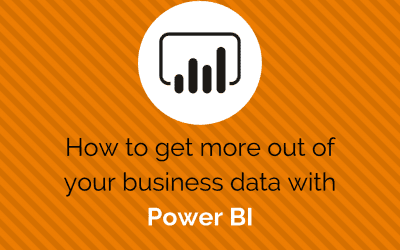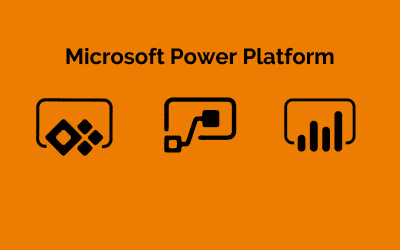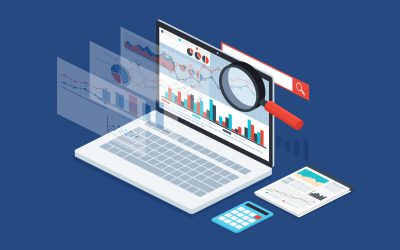Businesses generate vast amounts of data every day – data which, with the use of Business Intelligence (BI), allows them to drive insights and make key decisions. There are many different BI solutions on the market to match the varying requirements and budgets of the businesses that use them. However, the Total Cost of Ownership (TCO) stretches further than the “sticker price” and there are many factors that will inflate or reduce overall cost no matter the size of your project. By truly understanding the cost of your project before you begin, you can avoid perceived overspending and enjoy a successful project from all sides.
There is no set formula for calculating the Total Cost of Ownership of a Business Intelligence solution and the outcome will be different for every project depending on its scope. In our experience, much of the fluctuation in price stems from your business objectives and priorities. It’s therefore key to consider what you want to achieve with your new solution and the aspects of the project that are most crucial to your success. To draw out your true objectives, ask yourself questions such as:
- When does the project need to be completed by?
- What functionality do I require from my BI solution? Do I have any specific requirements that will require customisation?
- What questions do I want my data to answer?
- How many users do I need to start with and how will I roll this out across the organisation?
- How much data will I need to store and how will this increase over time?
- How many data sources do I need to connect?
Licenses
Licenses are the most obvious cost when implementing a BI solution but may only be a small part of the overall investment. Licence costs also tend to vary a lot between software vendors, with some offering more flexible pricing and discounts for multiple users. If there’s any chance you’ll want to scale your solution in the future, it’s a good idea to research all the licensing options available, as you may find that some solutions are specifically tailored to smaller businesses. You’ll also need to work out what kind of licenses your users will need and the access they will require. How many users will be creating reports? How many only require read access?
For example, Microsoft Power BI licenses come in three bands: Desktop (free for up to 1GB of storage), Pro (£7.50 per user/month) and Premium (for large-scale deployments, from £3,766.60 per month, priced according to your needs). It is therefore important to consider how your needs might change in the future as your organisation grows, both in terms of number of users and volume of data.
Implementation
Depending on the Business Intelligence solution you choose, you may or may not need to consider the implementation phase of your project. Most Software as a Service (SaaS) solutions simply require the vendor to create a login for your business and you’re ready to go, whereas more complex, customised solutions deployed on cloud or on-premises will usually need a bit more work. In the case of the latter, implementation costs can make up a large portion of the TCO and yet are often overlooked by businesses. The process involves consultants from the solution vendor installing the system, either remotely or on-site, linking it to external data sources and designing reports and dashboards. This will sometimes require additional software like an Extract, Transform and Load (ETL) tool, though many BI solutions now have this functionality built-in.
It is important to agree the scope of the project before you get started as this will vastly affect the price you pay. In our experience, a basic install of Microsoft Power BI takes just 1 to 2 days, but depending on the number and complexity of dashboards, reports and integrations required, we’ve been known to spend anything from 3 to 70+ days on a project. Most consultants will charge a daily rate for their time (between £400 and £600 per day tends to be the average), plus the cost of materials, so any project overrun is your own risk.
You also need to ensure that you will be able to store the sheer amount of data being processed by your Business Intelligence solution as well as understanding any additional costs associated with this. You’ll need to decide whether to deploy your solution on cloud or on-premises and consider the cost of servers and hardware or cloud hosting.
After the initial implementation, consultants from the BI vendor may need to train end users on the product to ensure they get the most from it. If users are left to their own devices, they tend to become disengaged with the solution and it becomes more difficult to get buy-in from them down the line. In some scenarios, this can lead to abandonment of the product and project failure. A lack of training can also lead to a lack of productivity where users spend huge amounts of time on simple tasks, hindering your chances of achieving your original objectives. For this reason, you’ll usually need to tag on 1-2 additional days at the end of your implementation for training and consider this in your overall project cost.
Support
Once your Business Intelligence solution is up and running, you’ll usually need some kind of support from the vendor to solve any issues, make small changes and generally keep the product functioning at its best. Vendors price this in all sorts of different ways, from flat annual fees to a percentage of your license price to pay as you go hourly chunks. Before you commit to a solution, it’s worth asking your vendor how they charge for this and the average number of hours per month they expect you to consume based on their previous experience. Then factor this into your overall TCO.
Overall, the cost of a Business Intelligence solution varies massively depending on the solution, number of licenses, customisations, training and support. By understanding the full breakdown of the Total Cost of Ownership (TCO) before you begin, you can manage expectations and ensure a successful project from the get-go. To find out more about Business Intelligence and how much a solution might cost for your business, get in touch today.







